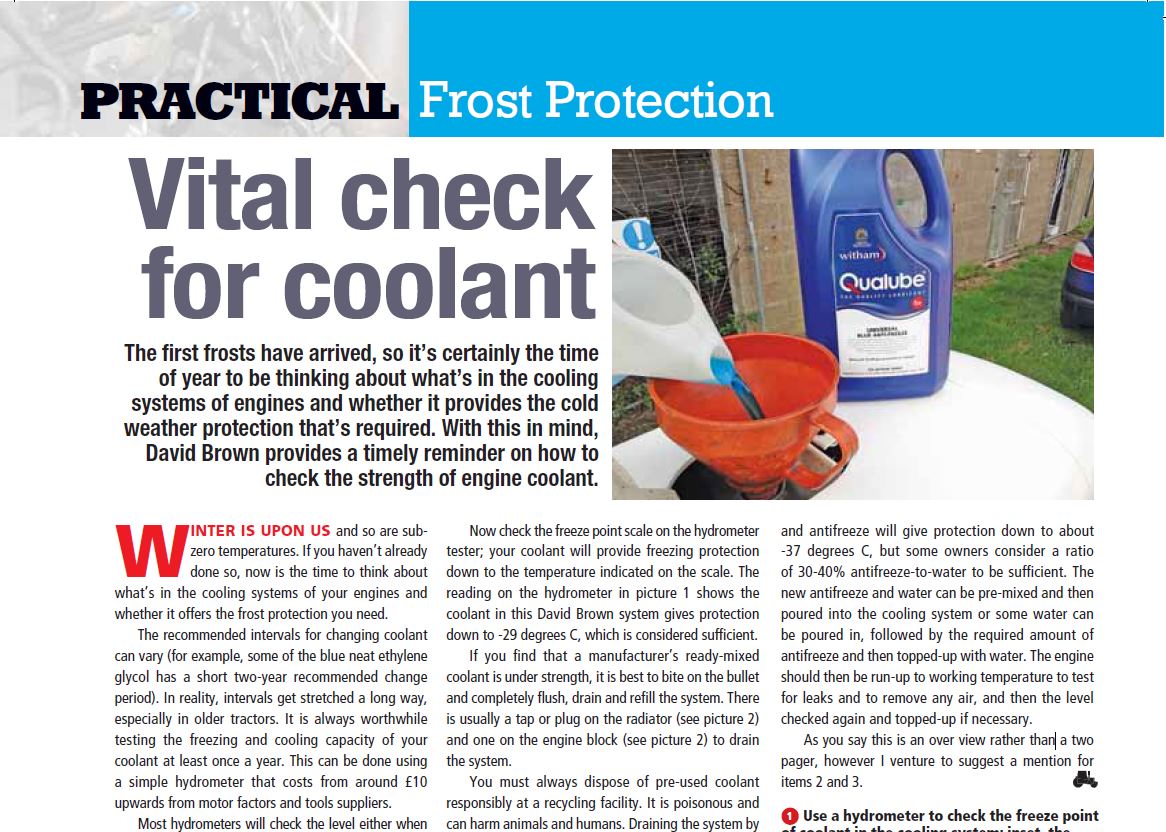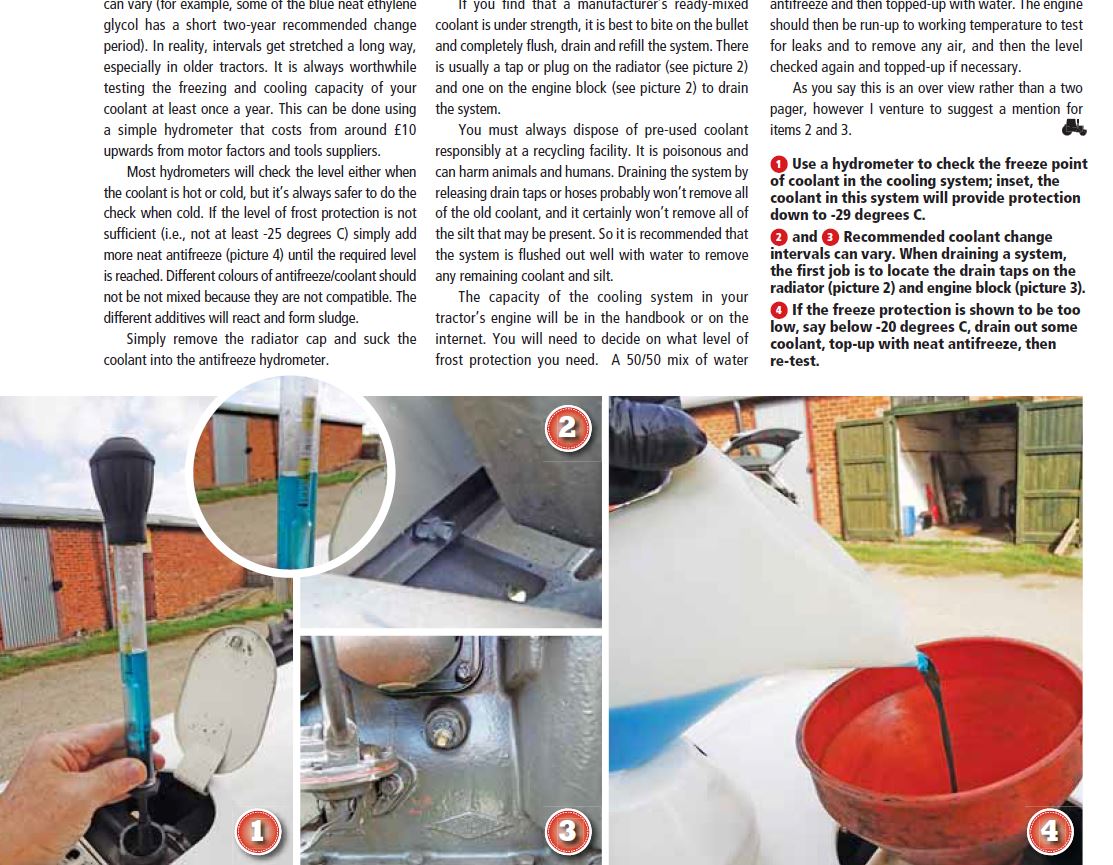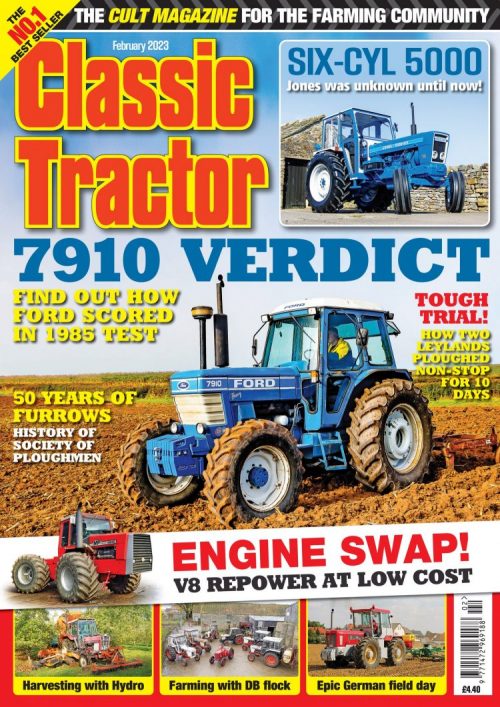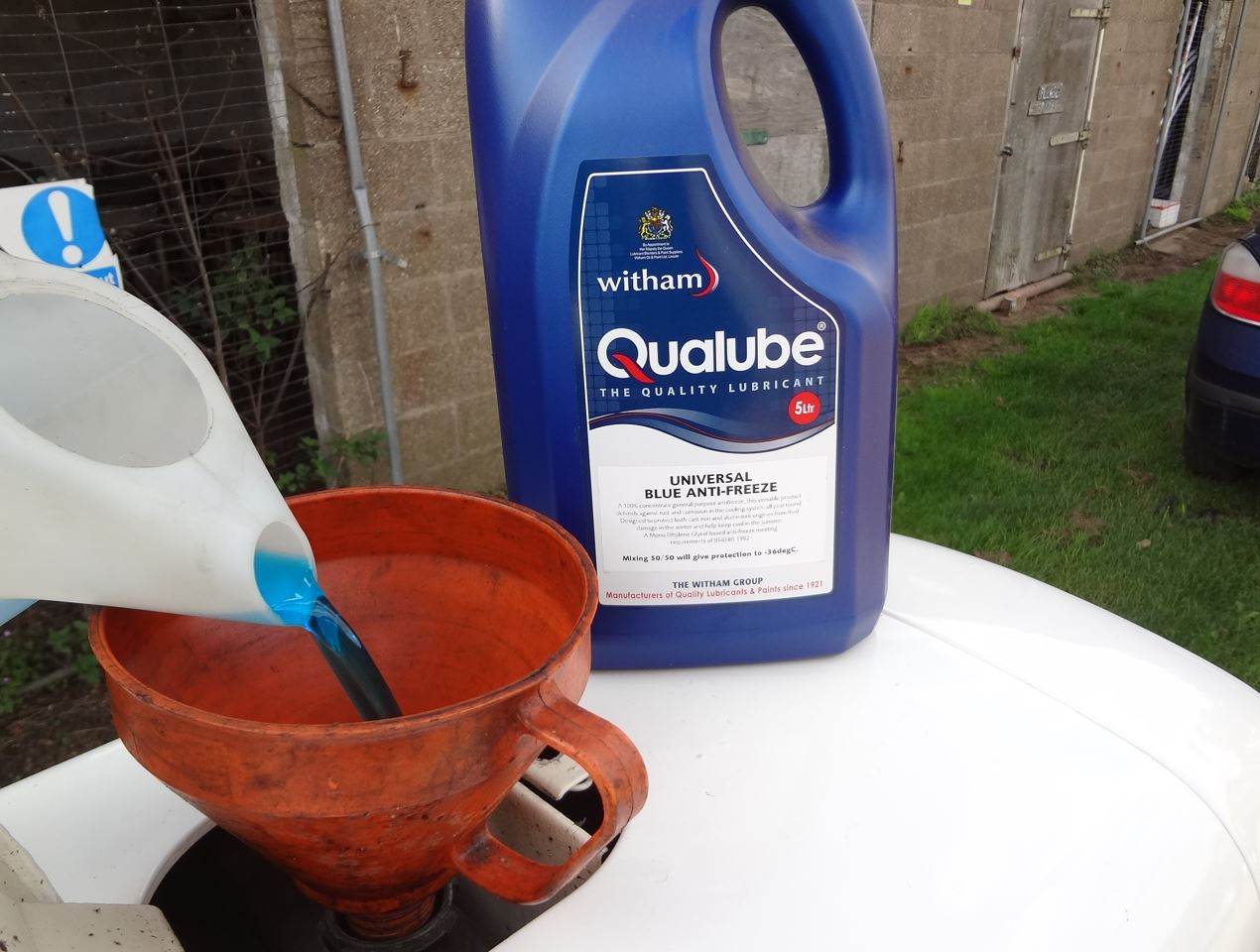Witham Antifreeze featured in Classic Tractor magazine
It was great to see our Qualube Antifreeze being used in Classic Tractor Magazine recently in an article about engine cooling systems and which coolants provide adequate frost protection.

WINTER IS UPON US and so are subzero temperatures. If you haven’t already done so, now is the time to think about
what’s in the cooling systems of your engines and whether it offers the frost protection you need.
The recommended intervals for changing coolant can vary (for example, some of the blue neat ethylene glycol has a short two-year recommended change period). In reality, intervals get stretched a long way, especially in older tractors. It is always worthwhile testing the freezing and cooling capacity of your coolant at least once a year. This can be done using a simple hydrometer that costs from around £10 upwards from motor factors and tools suppliers.
Most hydrometers will check the level either when the coolant is hot or cold, but it’s always safer to do the check when cold. If the level of frost protection is not sufficient (i.e., not at least -25 degrees C) simply add more neat antifreeze (picture 4) until the required level is reached. Different colours of antifreeze/coolant should not be not mixed because they are not compatible. The different additives will react and form sludge.
Simply remove the radiator cap and suck the coolant into the antifreeze hydrometer. Now check the freeze point scale on the hydrometer tester; your coolant will provide freezing protection down to the temperature indicated on the scale. The reading on the hydrometer in picture 1 shows the coolant in this David Brown system gives protection down to -29 degrees C, which is considered sufficient.
If you find that a manufacturer’s ready-mixed coolant is under strength, it is best to bite on the bullet and completely flush, drain and refill the system. There is usually a tap or plug on the radiator (see picture 2) and one on the engine block (see picture 2) to drain the system.
You must always dispose of pre-used coolant responsibly at a recycling facility. It is poisonous and can harm animals and humans. Draining the system by releasing drain taps or hoses probably won’t remove all of the old coolant, and it certainly won’t remove all of the silt that may be present. So it is recommended that the system is flushed out well with water to remove any remaining coolant and silt.
The capacity of the cooling system in your tractor’s engine will be in the handbook or on the internet. You will need to decide on what level of frost protection you need. A 50/50 mix of water and antifreeze will give protection down to about -37 degrees C, but some owners consider a ratio of 30-40% antifreeze-to-water to be sufficient. The new antifreeze and water can be pre-mixed and then poured into the cooling system or some water can be poured in, followed by the required amount of antifreeze and then topped-up with water.



Our Qualube Blue Anti-Freeze is a popular general purpose anti-freeze, based on silicate and nitrate inhibitor technology. It is a Mono Ethylene Glycol (MEG) based antifreeze and summer coolant, that provides maintenance free protection against freezing and boiling, but also gives excellent corrosion protection in cooling systems when mixed with the appropriate amount of water.
Often used in older vehicles or applications where a modern long-life coolant is not required, Qualube Blue Anti-Freeze provides a high level of cost effective protection to cooling systems and is conformable to British Standard BS6580:1992 and BS 6580:2010.
We have a range of Antifreeze and Coolants to protect all types of engines from frost damage, overheating and corrosion all year round, whether automotive, classic or heavy duty, ensuring reliable starts whatever the age of the vehicle.
We are also currently offering a SPECIAL WINTER DEAL on all anti-freeze purchases over 50 litres – please click here for more details and contact us while stocks last.



Leave a Reply